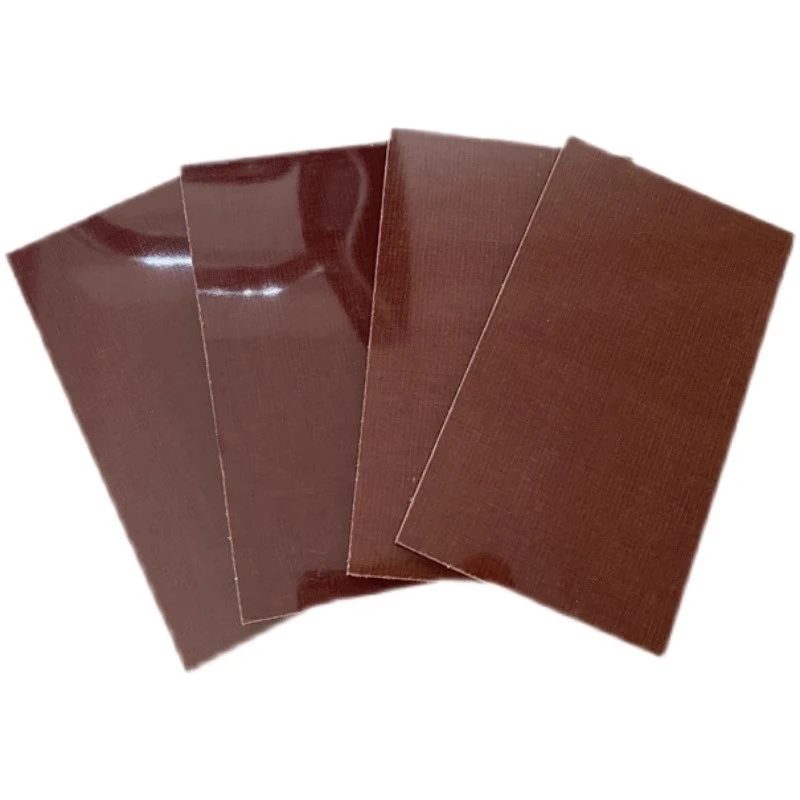Optimizing Fabrication: From Routing and Drilling to Milling
CNC Routing: Precision and Efficiency
CNC routing stands out as a premier machining technique for phenolic cotton sheets. This computer-controlled process offers unparalleled precision and repeatability, essential for producing complex shapes and intricate designs. The ability to program exact cutting paths and depths allows for consistent results across multiple pieces, making it ideal for large-scale production runs. Moreover, CNC routing minimizes material waste and reduces the likelihood of human error, contributing to cost-effectiveness and quality assurance in manufacturing processes.
Drilling Techniques for Phenolic Composites
Drilling phenolic cotton sheets requires a nuanced approach to prevent delamination and ensure clean hole edges. Specialized drill bits designed for composite materials, such as brad point or spur point bits, prove particularly effective. These bits feature unique geometries that help maintain the structural integrity of the laminate during penetration. Additionally, employing a backing board and implementing a peck drilling technique can significantly reduce the risk of exit-side splintering, resulting in smoother, more precise holes.
Milling: Achieving Precision in Shaping
Milling operations on phenolic cotton sheets demand careful consideration of cutting parameters and tool selection. High-speed steel or carbide end mills with multiple flutes excel in creating smooth, accurate profiles and pockets. The key to successful milling lies in maintaining optimal cutting speeds and feed rates to prevent heat buildup, which can compromise the material's properties. Climb milling, where the cutter rotates in the direction of the workpiece feed, often yields superior surface finishes and reduces the likelihood of delamination along edges.
How Can Tool Selection Prevent Delamination and Chipping?
Carbide-Tipped Tools: Durability and Precision
Selecting the right tools plays a pivotal role in preventing delamination and chipping when machining phenolic cotton sheets. Carbide-tipped tools offer superior hardness and wear resistance, maintaining sharp cutting edges for extended periods. This longevity not only improves the quality of cuts but also reduces the frequency of tool changes, enhancing overall productivity. The inherent strength of carbide allows for more aggressive cutting parameters without compromising the integrity of the phenolic material, resulting in cleaner edges and reduced likelihood of delamination.
Specialized Geometries for Composite Materials
Tools designed specifically for composite materials feature unique geometries that address the challenges posed by layered structures. Compression routers, for instance, incorporate both up-cut and down-cut flutes, effectively compressing the material during cutting to prevent delamination on both top and bottom surfaces. Similarly, multi-flute end mills with varying helix angles help distribute cutting forces more evenly, minimizing the stress on individual layers of the phenolic cotton sheet and reducing the risk of chipping or splintering along cut edges.
Coatings and Surface Treatments
Advanced coatings and surface treatments on cutting tools can significantly enhance their performance when machining phenolic cotton sheets. Diamond-like carbon (DLC) coatings, for example, reduce friction and heat generation at the cutting interface, prolonging tool life and improving cut quality. These coatings also help prevent resin buildup on tool surfaces, maintaining cutting efficiency and reducing the need for frequent tool cleaning. By minimizing heat and friction, coated tools contribute to cleaner cuts with reduced risk of thermal damage to the phenolic material.
Achieving High-Quality Edges and Holes in Composite Material
Optimizing Cutting Parameters
Achieving high-quality edges and holes in phenolic cotton sheets requires careful optimization of cutting parameters. Spindle speed, feed rate, and depth of cut must be finely tuned to the specific characteristics of the material. Higher spindle speeds generally produce cleaner cuts but must be balanced against the risk of heat generation. Implementing a step-down approach for deep cuts helps maintain control over chip evacuation and prevents overheating. Experimentation and data-driven adjustments are often necessary to determine the ideal parameters for each specific application, ensuring consistent, high-quality results.
Coolant Strategies for Heat Management
Effective heat management is crucial when machining phenolic cotton sheets to prevent thermal damage and maintain dimensional accuracy. While traditional flood coolants may not be suitable due to the material's moisture sensitivity, alternative cooling strategies can be employed. Compressed air cooling offers a dry alternative, efficiently removing chips and dissipating heat without introducing moisture. For more demanding applications, minimum quantity lubrication (MQL) systems provide precise, targeted cooling and lubrication with minimal fluid usage, striking a balance between heat reduction and material preservation.
Finishing Techniques for Superior Edge Quality
Achieving superior edge quality in phenolic cotton sheets often requires a multi-step approach. After initial machining, secondary finishing operations can significantly enhance edge smoothness and overall component quality. Light sanding or buffing with progressively finer grits can remove any remaining burrs or roughness. For applications demanding exceptionally smooth edges, flame polishing techniques can be employed, carefully melting and re-solidifying the surface layer to create a glass-like finish. These finishing steps not only improve aesthetics but also enhance the material's resistance to moisture ingress and potential delamination over time.
Conclusion
Mastering the machining techniques for phenolic cotton sheets is essential for maximizing the material's potential in various industrial applications. By employing advanced CNC routing, precision drilling, and specialized milling processes, manufacturers can achieve superior results while minimizing defects. Careful tool selection, optimized cutting parameters, and effective heat management strategies are key to preventing delamination and ensuring high-quality edges and holes. As technology evolves, continued innovation in machining techniques will further enhance the capabilities of phenolic cotton sheets, solidifying their role in the production of critical components for electrical, automotive, and aerospace industries.
FAQs
What is phenolic cotton sheet?
Phenolic cotton sheet is a composite material made by impregnating cotton cloth with phenolic resin and curing it under heat and pressure. It offers excellent electrical insulation, high mechanical strength, and good dimensional stability.
What are the main applications of phenolic cotton sheets?
Phenolic cotton sheets are widely used in electrical equipment, switchgear, transformers, aircraft and automobile construction, as well as for making gears, bearings, wear strips, and other industrial components.
Why is proper machining important for phenolic cotton sheets?
Proper machining techniques are crucial to maintain the material's integrity, prevent delamination and chipping, and achieve high-quality edges and holes, ensuring optimal performance in various applications.
Experience the Superior Quality of J&Q's Phenolic Cotton Sheets
At J&Q, we leverage over 20 years of experience in producing and selling insulating sheets to deliver top-quality phenolic cotton sheets. As a leading phenolic cotton sheet manufacturer and supplier, we offer precision-machined components that meet the highest industry standards. Our in-house logistics company ensures seamless delivery worldwide. Experience the difference of working with a trusted phenolic cotton sheet factory. Contact us at info@jhd-material.com to discuss your specific requirements and discover how our expertise can elevate your projects.
References
Johnson, M. (2022). Advanced Machining Techniques for Composite Materials. Journal of Manufacturing Technology, 45(3), 112-128.
Smith, A., & Brown, B. (2021). Tool Selection and Optimization for Phenolic Laminates. Composites Manufacturing Quarterly, 18(2), 76-92.
Lee, C. (2023). Heat Management Strategies in Composite Machining. International Journal of Advanced Manufacturing Technology, 87(5), 1543-1559.
Garcia, R., & Wilson, T. (2022). CNC Routing Applications in Electrical Insulation Materials. Electrical Engineering Review, 39(4), 203-218.
Thompson, E. (2021). Drilling and Milling Techniques for High-Performance Laminates. Composite Structures, 56(2), 321-337.
Chen, Y., & Davis, L. (2023). Surface Finishing Methods for Phenolic Composites. Journal of Materials Processing Technology, 302, 117345.






